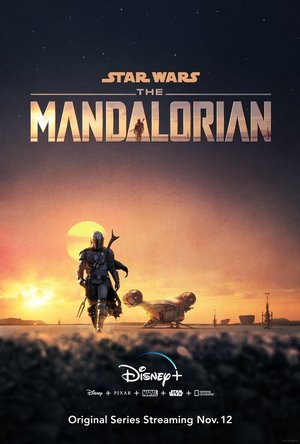Search
Search results
Andy K (10823 KP) rated Us (2019) in Movies
Sep 21, 2019
I wish I would've liked it more.
A married couple decide to take a vacation at a beach house. Their relaxation bliss is soon interrupted by four strangers who actually turn out to be evil counterparts or "doppelgangers" of the family who have come to torment them.
Each counterpart goes after their "normal" version in various ways including on the used power boat they had just purchased or having a conversation while sitting in their living room. Not known is why or who they are and what are their intentions. They family tried to take refuge at their neighbors home only to discover they met with their demise courtesy of their own set of demons hunting them.
The family eventually reunites and tried to escape, but are pursued. Several confrontations ensue at the beach where some carnage is executed by the demons and the family against each other.
Then the twist, kind of. A scene at the start of the film when the mother had a traumatic experience as a child getting separated from her family and finding her way into a hall of mirrors and seeing her other self as a child is explained. Truths you thought were truths end of being a lie or a different situation than you originally thought.
In trying to figure out a type for this film it is rather difficult. It is not particularly scary or gory. I suppose suspense/thriller would suit it best, but I'm not sure that is what writer/director Jordan Peele was going for. I liked the visuals, the acting, the musical score and some of the ideas, but not really the execution or the screenplay.
It had some jokes like the "Home Alone" reference and other scenes where the parents and children are together making fun of each other which were just not funny and took away from the tension.
My main problem with the script was the fact that the characters' actions were mostly not appropriate. No one seemed to be bothered by the fact that these other human/non humans existed and when family members, even children, begin performing heinous actions, they don't even seem to blink an eye. They also have to write in the scene where they try and call the police and they are unavailable.
I feel like there was a really great film in there somewhere, they just didn't get it quite right. The middle section dragged somewhat and the ending was interesting but didn't hold water the more you thought about it. I have no issue with a vague ending as long as it leaves you thinking and drawing your own conclusions; however, this film was vague not in a good way I think just due to a mediocre screenplay or maybe bad editing.
Peele certainly had his own big shoes t fill after getting a Best Picture nomination for his first film, Get Out. The box office and critical acclaim were paramount on that one.
Hopefully, he will rebound from this film and create something truly unique and interesting for his next effort. We certainly need more great horror writer/directors out there!
Each counterpart goes after their "normal" version in various ways including on the used power boat they had just purchased or having a conversation while sitting in their living room. Not known is why or who they are and what are their intentions. They family tried to take refuge at their neighbors home only to discover they met with their demise courtesy of their own set of demons hunting them.
The family eventually reunites and tried to escape, but are pursued. Several confrontations ensue at the beach where some carnage is executed by the demons and the family against each other.
Then the twist, kind of. A scene at the start of the film when the mother had a traumatic experience as a child getting separated from her family and finding her way into a hall of mirrors and seeing her other self as a child is explained. Truths you thought were truths end of being a lie or a different situation than you originally thought.
In trying to figure out a type for this film it is rather difficult. It is not particularly scary or gory. I suppose suspense/thriller would suit it best, but I'm not sure that is what writer/director Jordan Peele was going for. I liked the visuals, the acting, the musical score and some of the ideas, but not really the execution or the screenplay.
It had some jokes like the "Home Alone" reference and other scenes where the parents and children are together making fun of each other which were just not funny and took away from the tension.
My main problem with the script was the fact that the characters' actions were mostly not appropriate. No one seemed to be bothered by the fact that these other human/non humans existed and when family members, even children, begin performing heinous actions, they don't even seem to blink an eye. They also have to write in the scene where they try and call the police and they are unavailable.
I feel like there was a really great film in there somewhere, they just didn't get it quite right. The middle section dragged somewhat and the ending was interesting but didn't hold water the more you thought about it. I have no issue with a vague ending as long as it leaves you thinking and drawing your own conclusions; however, this film was vague not in a good way I think just due to a mediocre screenplay or maybe bad editing.
Peele certainly had his own big shoes t fill after getting a Best Picture nomination for his first film, Get Out. The box office and critical acclaim were paramount on that one.
Hopefully, he will rebound from this film and create something truly unique and interesting for his next effort. We certainly need more great horror writer/directors out there!

Extreme Shooting 3D Adventure
Games
App
Are you ready for most exciting army game the Extreme shooting 3D adventure? You love to play this...
LeftSideCut (3776 KP) rated The Mandalorian - Season 1 in TV
May 5, 2020
A live action series set in the Star Wars universe has been a long time coming and thankfully, it hit almost all the right notes.
The Mandalorian is set after the events of Return of the Jedi, where the empire is all but gone, and the titular hero is going about his business, taking bounty jobs for good pay. It's not too long before it's revealed that remnants of the empire remain intact and one unexpected bounty job sets Mando on a different path entirely.
The plot isn't too heavy on dramatics for the most part, and the 8 episode arc concentrates on small stories - mini adventures that are resolved relatively quickly. It's a lot of fun. The final two episodes set up a larger narrative, that has me excited for season 2.
The Mandalorian himself (Pedro Pascal) is a great lead, and considering his face is covered the entire time, that's high praise. He has a cold, precise exterior, and shows off frequently his capabilities as a warrior (every episode has a pretty awesome action set piece at one point). Underneath it all, his humanity is shown when The Child (commonly know as Baby Yoda) is thrown into his care, drawing paraells with his own childhood.
The Child arguably steals the show at intervals, being offensively cute throughout, and showing hints at force powers here and there.
Other cast members include Cara Dune (Gina Carano), a completely badass ex Imperial Shock Trooper. Her character is another highlight, and I sincerely hope to see her return for season 2.
Greef Karga (Carl freaking Weathers), bounty salesman and sometimes ally of Mando. The three of them (plus The Child) make for a damn fine crew.
Some further Star power is provided by IG-11 (Taika Waititi) and Kuiil (Nick Nolte) and these two characters further flesh out a great cast.
The villains of the piece aren't in your face, but are present enough to lay the seeds for bigger things to come. Earlier on we have The Client (Werner Herzog oozing text book evil empire vibes), and a bit later, Moff Gideon (Giancarlo Esposito), who is menacing enough to make an impact with his little screentime.
I also enjoyed the fleshing out of the Mandalorian religion.
There is some great directing talent in display as well, with episode from the likes of the aforementioned Taika Waititi, Deborah Chow, Dave Filoni, Bryce Dallas Howard, and Rick Famuyiwa. They've all down a great job of bringing this particular Star Wars narrative to life, and I genuinely enjoyed every episode.
Except for episode 6. And thats mainly due to the throwaway characters we get given. (It reminded me of that infamous shitty episode in season 2 of Stranger Things.)
The devotion to using practical effects pays off tremendously, as The Mandalorian frequently looks superb. The CGI used is actually pretty subtle, and the mix of the two works.
All in all, it's a strong first season that personally tops any of the recent trilogy in terms of Star Wars material. Can't wait to see where it goes!
The Mandalorian is set after the events of Return of the Jedi, where the empire is all but gone, and the titular hero is going about his business, taking bounty jobs for good pay. It's not too long before it's revealed that remnants of the empire remain intact and one unexpected bounty job sets Mando on a different path entirely.
The plot isn't too heavy on dramatics for the most part, and the 8 episode arc concentrates on small stories - mini adventures that are resolved relatively quickly. It's a lot of fun. The final two episodes set up a larger narrative, that has me excited for season 2.
The Mandalorian himself (Pedro Pascal) is a great lead, and considering his face is covered the entire time, that's high praise. He has a cold, precise exterior, and shows off frequently his capabilities as a warrior (every episode has a pretty awesome action set piece at one point). Underneath it all, his humanity is shown when The Child (commonly know as Baby Yoda) is thrown into his care, drawing paraells with his own childhood.
The Child arguably steals the show at intervals, being offensively cute throughout, and showing hints at force powers here and there.
Other cast members include Cara Dune (Gina Carano), a completely badass ex Imperial Shock Trooper. Her character is another highlight, and I sincerely hope to see her return for season 2.
Greef Karga (Carl freaking Weathers), bounty salesman and sometimes ally of Mando. The three of them (plus The Child) make for a damn fine crew.
Some further Star power is provided by IG-11 (Taika Waititi) and Kuiil (Nick Nolte) and these two characters further flesh out a great cast.
The villains of the piece aren't in your face, but are present enough to lay the seeds for bigger things to come. Earlier on we have The Client (Werner Herzog oozing text book evil empire vibes), and a bit later, Moff Gideon (Giancarlo Esposito), who is menacing enough to make an impact with his little screentime.
I also enjoyed the fleshing out of the Mandalorian religion.
There is some great directing talent in display as well, with episode from the likes of the aforementioned Taika Waititi, Deborah Chow, Dave Filoni, Bryce Dallas Howard, and Rick Famuyiwa. They've all down a great job of bringing this particular Star Wars narrative to life, and I genuinely enjoyed every episode.
Except for episode 6. And thats mainly due to the throwaway characters we get given. (It reminded me of that infamous shitty episode in season 2 of Stranger Things.)
The devotion to using practical effects pays off tremendously, as The Mandalorian frequently looks superb. The CGI used is actually pretty subtle, and the mix of the two works.
All in all, it's a strong first season that personally tops any of the recent trilogy in terms of Star Wars material. Can't wait to see where it goes!

Parker's Driving Challenge
Games
App
Thunderbirds Are GO. Take on tons of exciting missions in the game based on the highly popular TV...

BMO Snaps - Adventure Time Photo Game
Games and Entertainment
App
It’s Adventure Time! Help BMO on an epic quest to save the Land of Ooo from hologram clones of...

Secrets of the Lost Tomb
Tabletop Game
Secrets of the Lost Tomb is a cooperative game of thrilling action-adventure and discovery. Players...
Kristy H (1252 KP) rated Gone for Good in Books
Aug 26, 2021
An excellent mystery where a cold case intersects with a new murder
In the 1990s, the Lovelorn Killer killed seven women and disappeared. The last known victim was Katherine Duffy, the wife of a police officer, who was killed on Halloween. After twenty years, many wonder if he's gone for good. But a group of amateur online sleuths, known as the Grave Diggers, don't think that. They take on cold cases and investigate them. One of these Diggers is Grace Harper, a grocery store worker. Grace is sure the Lovelorn Killer is out there, blending into the same neighborhoods he hunted in. Detective Annalisa Vega's father--also a cop--was partnered with Katie Duffy's husband back in the day. Her murder was a defining moment in Annalisa's life. When Annalisa is called to the scene of Grace's murder and realizes she was killed in a similar manner to the Lovelorn Killer, she wonders if the killer is back. Investigating will mean dredging up Annalisa's childhood memories and giving everything she has to catch a murderer.
"With each passing year, the Lovelorn Killer recedes into history and people shrug at the mention of his name. Looks like he's gone for good."
This is an excellent mystery--honestly no surprise when it's by Schaffhausen. I love her Ellery/Reed series, and I'm excited that there's a new series from her. This is a dark read and Annalisa's personal ties to the case and investigation only strengthen this book. It's wonderful reading a story with a strong female detective (and a female boss). Annalisa is a new detective, struggling with the fact that she must work with her ex-husband, Nick Carelli, the established detective on the force. But she doesn't let that, or anything, stop her. Schaffhausen is so good at writing a police procedural; she writes about the processes and force dynamics so well. You feel a part of the investigation and Annalisa's police family superbly. Same with the city of Chicago. She captures the city perfectly. As someone with Chicago ties, this book is so Chicago. I cannot wait for my parents, who grew up in the Chicago suburbs, to read it.
Told from Annalisa's perspective and interspersed with excerpts from Grace's journal, GONE FOR GOOD is tense and crackling with suspense. It's a fast moving read that keeps you guessing from the very beginning, which opens with Grace's death. Yet Grace always feels like another living character in the book, and she's integral to the plot. This is truly a dark read, with a lot of death and murder, and a "bad guy" who is quite bad. I'm always impressed at how Schaffhausen can write stories that permeate with evil and tension.
Overall, I loved everything about this book. The unification of old and new cases and way the Internet sleuths added to the cases. How Annalisa's personal life intertwined with the investigation. GOOD is well-written and keeps you guessing until the very end. I'm looking forward to the next book in the series. 4.5 stars.
I received a copy of this book from Minotaur Books and Netgalley in return for an unbiased review.
"With each passing year, the Lovelorn Killer recedes into history and people shrug at the mention of his name. Looks like he's gone for good."
This is an excellent mystery--honestly no surprise when it's by Schaffhausen. I love her Ellery/Reed series, and I'm excited that there's a new series from her. This is a dark read and Annalisa's personal ties to the case and investigation only strengthen this book. It's wonderful reading a story with a strong female detective (and a female boss). Annalisa is a new detective, struggling with the fact that she must work with her ex-husband, Nick Carelli, the established detective on the force. But she doesn't let that, or anything, stop her. Schaffhausen is so good at writing a police procedural; she writes about the processes and force dynamics so well. You feel a part of the investigation and Annalisa's police family superbly. Same with the city of Chicago. She captures the city perfectly. As someone with Chicago ties, this book is so Chicago. I cannot wait for my parents, who grew up in the Chicago suburbs, to read it.
Told from Annalisa's perspective and interspersed with excerpts from Grace's journal, GONE FOR GOOD is tense and crackling with suspense. It's a fast moving read that keeps you guessing from the very beginning, which opens with Grace's death. Yet Grace always feels like another living character in the book, and she's integral to the plot. This is truly a dark read, with a lot of death and murder, and a "bad guy" who is quite bad. I'm always impressed at how Schaffhausen can write stories that permeate with evil and tension.
Overall, I loved everything about this book. The unification of old and new cases and way the Internet sleuths added to the cases. How Annalisa's personal life intertwined with the investigation. GOOD is well-written and keeps you guessing until the very end. I'm looking forward to the next book in the series. 4.5 stars.
I received a copy of this book from Minotaur Books and Netgalley in return for an unbiased review.
Gareth von Kallenbach (980 KP) rated Ghostbusters: Afterlife (2021) in Movies
Nov 16, 2021
Back in 1984 when big hair and neon were the norms; a movie appeared that soon became a cultural phenomenon. The movie involved a team of unlikely Paranormal Investigators and the mix of comedy, FX, and Ghosts turned the movie into a smash hit and a Pop Culture mainstay. The abundance of products that followed and the inescapable theme song and tagline soon gave rise to a sequel which while a success; did not resonate the way the original film had and thus the “Ghostbusters” film franchise became dormant.
While a successful video game and merchandise line kept the franchise alive; the 2016 reboot with an all-female team failed to capture the magic at the box office and again put the franchise’s cinematic future in question.
Thankfully after several delays due to the Covid 19 Pandemic; “Ghostbusters Afterlife” has arrived and is the worthy sequel that does justice to the original film and sets the stage well for future cinematic exploits.
The film follows a down on her luck mother named Callie )Carrie Coon) and her children Trevor (Finn Wolfhard); and Phoebe (Mckenna Grace), as they are forced to move to a dilapidated farm in rural Oklahoma following the passing of Callie’s estranged father and her subsequent eviction.
A series of unexplained earthquakes clues the smart and precocious Phoebe that something is up and with her new friend Podcast (Logan Kim), and teacher Mr. Grooberson (Paul Rudd); help her uncover her connection to the original Ghostbusters and the abundance and significance of the gear that her Grandfather has left on the farm.
Things soon take a turn for the worse and despite skeptical locals and the emerging danger, Phoebe, Trevor, and their friends have to battle the forces of evil to save the world.
The movie takes its time getting to the action and spends plenty of time establishing the characters, their motivations, and their relationships with one another. There are abundant homages to the original film; some of which are very subtle and clever but never seem gratuitous or tacked on.
The film also does not rely on the FX to tell the tale as while there are some solid effects in the film; this is a character-driven tale and the new cast works well with some surprise guests who pop up throughout the film.
Director Jason Reitman; son of the Director of the original film; clearly knows and loves the material as he not only helped craft the story but deftly weaves a new tale into the franchise which also fits well with the first film and does not attempt to reboot but rather continue the franchise.
There are two extra scenes in the credits that you will not want to miss as not only are they great fun; but also tease of future adventures to come.
The film also has a few touching moments that caused some unexpected emotion from the audience at our Press Screening and helped establish “Ghostbusters Afterlife” as not only a winning entry into the series but also one of the most enjoyable films of the year.
4.5 stars out of 5.
While a successful video game and merchandise line kept the franchise alive; the 2016 reboot with an all-female team failed to capture the magic at the box office and again put the franchise’s cinematic future in question.
Thankfully after several delays due to the Covid 19 Pandemic; “Ghostbusters Afterlife” has arrived and is the worthy sequel that does justice to the original film and sets the stage well for future cinematic exploits.
The film follows a down on her luck mother named Callie )Carrie Coon) and her children Trevor (Finn Wolfhard); and Phoebe (Mckenna Grace), as they are forced to move to a dilapidated farm in rural Oklahoma following the passing of Callie’s estranged father and her subsequent eviction.
A series of unexplained earthquakes clues the smart and precocious Phoebe that something is up and with her new friend Podcast (Logan Kim), and teacher Mr. Grooberson (Paul Rudd); help her uncover her connection to the original Ghostbusters and the abundance and significance of the gear that her Grandfather has left on the farm.
Things soon take a turn for the worse and despite skeptical locals and the emerging danger, Phoebe, Trevor, and their friends have to battle the forces of evil to save the world.
The movie takes its time getting to the action and spends plenty of time establishing the characters, their motivations, and their relationships with one another. There are abundant homages to the original film; some of which are very subtle and clever but never seem gratuitous or tacked on.
The film also does not rely on the FX to tell the tale as while there are some solid effects in the film; this is a character-driven tale and the new cast works well with some surprise guests who pop up throughout the film.
Director Jason Reitman; son of the Director of the original film; clearly knows and loves the material as he not only helped craft the story but deftly weaves a new tale into the franchise which also fits well with the first film and does not attempt to reboot but rather continue the franchise.
There are two extra scenes in the credits that you will not want to miss as not only are they great fun; but also tease of future adventures to come.
The film also has a few touching moments that caused some unexpected emotion from the audience at our Press Screening and helped establish “Ghostbusters Afterlife” as not only a winning entry into the series but also one of the most enjoyable films of the year.
4.5 stars out of 5.
BankofMarquis (1832 KP) rated Top Gun: Maverick (2022) in Movies
Jun 1, 2022
The very definition of "Summer Flick"
There is absolutely no denying it - TOP GUN: MAVERICK is the very definition of a “Summer Blockbuster” movie - the kind of film that will appeal to a wide variety of audiences who want nothing more than to escape into a world of heroes (and villains), good vs. evil, with lots of fast chases and things exploding.
And that is just what you get with the sequel to the 1986 hit - a summer blockbuster, which will do well at the box office - just don’t expect tricky plot developments or in-depth character examinations. The plot and the characters are just there to deliver the blockbuster goods.
Bringing back the main character from the first TOP GUN film, Tom Cruise as Captain Pete “Maverick” Mitchell, TOP GUN: MAVERICK shows Maverick 30 years (or so) after the events of the first film with “just one more” mission to go. Maverick is brought back to train a dozen hot-shot pilots, including one that is the son of his best friend - a friend who’s death Maverick has been traumatized by during the past 30 years.
Cruise, of course, is perfect in this role. He has the right blend of arrogance and charisma to pull of the fine balance needed between these two traits. Jennifer Connelly is on board as the requisite love interest and she more than holds her own with Cruise in what is an underwritten role as are all of the roles in this film by writer Peter Craig (BAD BOYS FOR LIFE) with Direction by Joseph Kosinski (OBLIVION).
Miles Teller (the son of the man who Maverick is mourning, who blames Maverick for his dad’s death), John Hamm (the a-hole boss that thinks that Maverick is “writing checks his body can’t cash”), Glen Powell (the arrogant young hot shot) and the rest are all one-note caricatures that leaves the audience not really caring about their fate.
Only Val Kilmer (reprising his role as “Iceman” from the first movie) comes out of this unscathed for his character is suffering from throat cancer and cannot speak above a whisper (much like Kilmer in real life). It was good to see him on the big screen again.
But…you don’t come to this film for the characters, you come to this picture for the high-flying action sequences, and…in the last part of this film…you get ‘em in spades! Unfortunately, you get way too LITTLE action in the first part of this film, it’s mostly nostalgic fond remembrances of the first film, so I found myself wriggling in my seat waiting for the action that I knew was to come.
It’s the perfect summer movie and one that is far more superior being seen on the big screen. It is the type of flick that one doesn’t have to pay to close attention to, but when it does grab your attention, it does it well…enough.
If you have the need…the need for speed…you can do much worse than TOP GUN: MAVERICK.
Letter Grade: B
7 stars (out of 10) and you can take that to the Bank(ofMarquis)
And that is just what you get with the sequel to the 1986 hit - a summer blockbuster, which will do well at the box office - just don’t expect tricky plot developments or in-depth character examinations. The plot and the characters are just there to deliver the blockbuster goods.
Bringing back the main character from the first TOP GUN film, Tom Cruise as Captain Pete “Maverick” Mitchell, TOP GUN: MAVERICK shows Maverick 30 years (or so) after the events of the first film with “just one more” mission to go. Maverick is brought back to train a dozen hot-shot pilots, including one that is the son of his best friend - a friend who’s death Maverick has been traumatized by during the past 30 years.
Cruise, of course, is perfect in this role. He has the right blend of arrogance and charisma to pull of the fine balance needed between these two traits. Jennifer Connelly is on board as the requisite love interest and she more than holds her own with Cruise in what is an underwritten role as are all of the roles in this film by writer Peter Craig (BAD BOYS FOR LIFE) with Direction by Joseph Kosinski (OBLIVION).
Miles Teller (the son of the man who Maverick is mourning, who blames Maverick for his dad’s death), John Hamm (the a-hole boss that thinks that Maverick is “writing checks his body can’t cash”), Glen Powell (the arrogant young hot shot) and the rest are all one-note caricatures that leaves the audience not really caring about their fate.
Only Val Kilmer (reprising his role as “Iceman” from the first movie) comes out of this unscathed for his character is suffering from throat cancer and cannot speak above a whisper (much like Kilmer in real life). It was good to see him on the big screen again.
But…you don’t come to this film for the characters, you come to this picture for the high-flying action sequences, and…in the last part of this film…you get ‘em in spades! Unfortunately, you get way too LITTLE action in the first part of this film, it’s mostly nostalgic fond remembrances of the first film, so I found myself wriggling in my seat waiting for the action that I knew was to come.
It’s the perfect summer movie and one that is far more superior being seen on the big screen. It is the type of flick that one doesn’t have to pay to close attention to, but when it does grab your attention, it does it well…enough.
If you have the need…the need for speed…you can do much worse than TOP GUN: MAVERICK.
Letter Grade: B
7 stars (out of 10) and you can take that to the Bank(ofMarquis)
Lyndsey Gollogly (2893 KP) rated Resilience ( Rise of Iliri book 6) in Books
Jan 5, 2023
Contains spoilers, click to show
4 of 235
Kindle
Resilience ( Rise of Iliri book 6)
By Auryn Hadley
⭐️⭐️⭐️⭐️⭐️
Auryn Hadley's sixth action-adventure in The Rise of the Iliri fantasy series asks how far mankind will go to protect their pride. Because it seems they'll guard it at the expense of all else. Reminiscent of a futuristic Lord of the Rings, this epic fantasy romance traces not only the personal journey of its heroine and her family - a reverse harem made up of nine indomitable warriors who comprise an elite military force called the Black Blades - but also the liberation of a people and a new way of thinking for the whole world. For the source of iliri power is not domination, but connection. They seek it, cultivate it, and use it to defeat their enemies.
It's the iliri - now a rising, formidable race of underdogs - who must decide whether to risk their lives for the ungracious human race. Unbeknownst to humans, their fate lies in the capable hands of the iliri leader, the powerful Salryc Luxx. And she's no longer willing to be yanked around at any price.
Sal and the Black Blades have been summoned to a meeting with Parliament representatives of the Conglomerate of Free Citizens. But this time, she's not serving as their slave. Nor is she about to be captured and brought to trial again. Now the ruler of all iliri in her adopted country of Anglia - and de facto queen - she knows she has the upper hand.
The enemy Terrans have besieged Eastward, engaging in brutal guerrilla tactics throughout the country - hitting without mercy and killing all in their path. The world of humans is desperate.
"Tell me why I should send my brothers and sisters to die for humans that care so little for us?" Sal asks. The answer she's searching for comes from a frail iliri servant, whose telltale snow-colored skin is almost as light as Sal's: If she leaves the humans to die by the Terrans, war and enslavement will continue. History will repeat itself. But if it's the iliri and their allies who manage to defeat evil, perhaps humans can learn to respect them.
She knows she isn't finished fighting. Iliri warriors haven't yet "done enough." Not while so many of their brothers are still enslaved.
Alongside her faithful friends and leaders--and the tireless Black Blades - Sal must choose whether to surrender to her role as their leader and contend with The Emperor's murderous army - as well as the treacherous pride of the human race.
!!! Has a spoiler for book 5!!!
Every time I pick one of these books up I say it’s the best one yet and yes I’m saying it again! After the tears at the end of Book 5 we catch up with Sal and the blades dealing with the aftermath of losing Blaec and finding her feet with her new role and new male. This is non stop from the first word to the last. Brilliantly written it has to be one of my favourite series. Highly recommended for the fantasy readers!
Kindle
Resilience ( Rise of Iliri book 6)
By Auryn Hadley
⭐️⭐️⭐️⭐️⭐️
Auryn Hadley's sixth action-adventure in The Rise of the Iliri fantasy series asks how far mankind will go to protect their pride. Because it seems they'll guard it at the expense of all else. Reminiscent of a futuristic Lord of the Rings, this epic fantasy romance traces not only the personal journey of its heroine and her family - a reverse harem made up of nine indomitable warriors who comprise an elite military force called the Black Blades - but also the liberation of a people and a new way of thinking for the whole world. For the source of iliri power is not domination, but connection. They seek it, cultivate it, and use it to defeat their enemies.
It's the iliri - now a rising, formidable race of underdogs - who must decide whether to risk their lives for the ungracious human race. Unbeknownst to humans, their fate lies in the capable hands of the iliri leader, the powerful Salryc Luxx. And she's no longer willing to be yanked around at any price.
Sal and the Black Blades have been summoned to a meeting with Parliament representatives of the Conglomerate of Free Citizens. But this time, she's not serving as their slave. Nor is she about to be captured and brought to trial again. Now the ruler of all iliri in her adopted country of Anglia - and de facto queen - she knows she has the upper hand.
The enemy Terrans have besieged Eastward, engaging in brutal guerrilla tactics throughout the country - hitting without mercy and killing all in their path. The world of humans is desperate.
"Tell me why I should send my brothers and sisters to die for humans that care so little for us?" Sal asks. The answer she's searching for comes from a frail iliri servant, whose telltale snow-colored skin is almost as light as Sal's: If she leaves the humans to die by the Terrans, war and enslavement will continue. History will repeat itself. But if it's the iliri and their allies who manage to defeat evil, perhaps humans can learn to respect them.
She knows she isn't finished fighting. Iliri warriors haven't yet "done enough." Not while so many of their brothers are still enslaved.
Alongside her faithful friends and leaders--and the tireless Black Blades - Sal must choose whether to surrender to her role as their leader and contend with The Emperor's murderous army - as well as the treacherous pride of the human race.
!!! Has a spoiler for book 5!!!
Every time I pick one of these books up I say it’s the best one yet and yes I’m saying it again! After the tears at the end of Book 5 we catch up with Sal and the blades dealing with the aftermath of losing Blaec and finding her feet with her new role and new male. This is non stop from the first word to the last. Brilliantly written it has to be one of my favourite series. Highly recommended for the fantasy readers!





